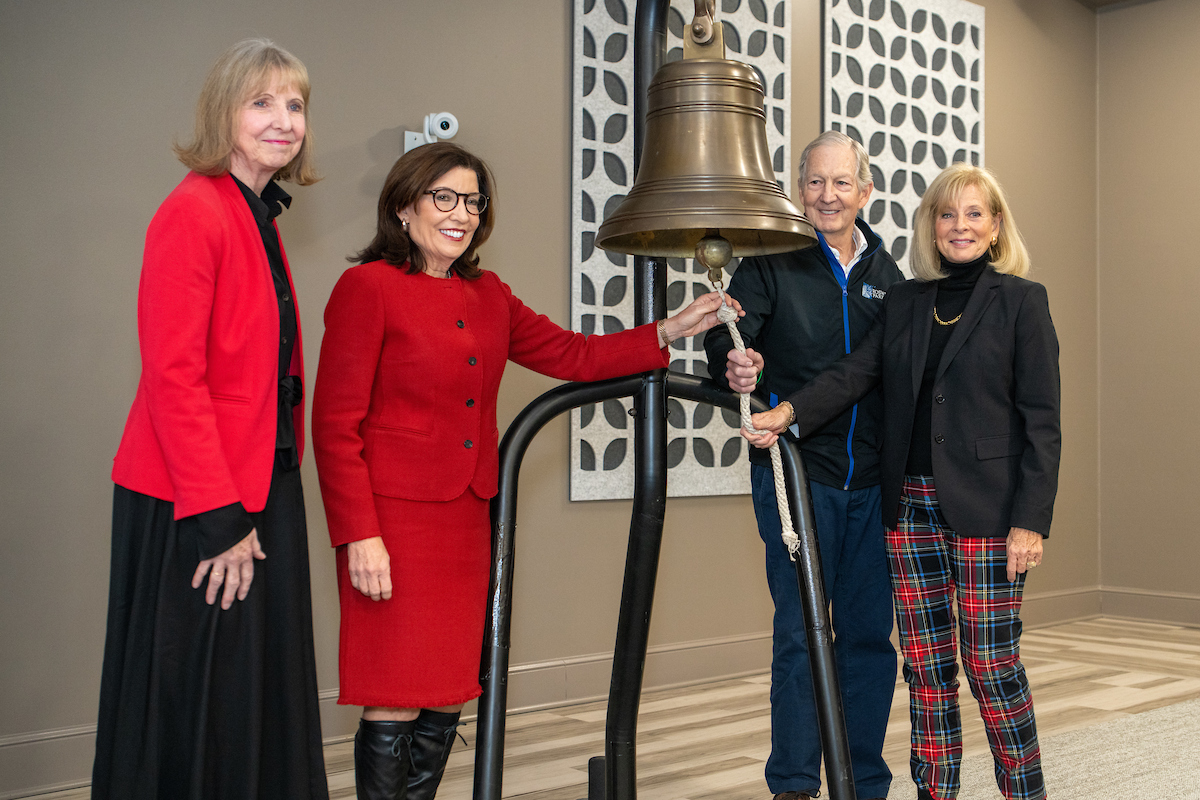Della was known as an international leader in the field of cement and concrete research and for being a groundbreaker for women in science.
“Della was one of our true pioneers in materials,” said Clive Randall, director of MRI and distinguished professor of materials science and engineering. “Her research gave her many accolades in the past, but it also laid down the foundation for the development of lower-CO2 emission production methods of cements, which are critical to creating future infrastructure with lower climate impact.”
Della was born Nov. 3, 1926, as Della Marie Martin in Merrill, Oregon. After graduating high school at age 16, she enrolled at the University of Oregon where she graduated Phi Beta Kappa with a bachelor’s degree in chemistry in 1947. From there, she came to Penn State to begin her graduate studies, receiving her master’s degree in minerology in 1949.
During her graduate work, she shared an office and lab with another graduate student, Rustum Roy, who later became a significant figure in materials research in his own right as a founding member of the MRL and a Penn State faculty member. Their relationship grew and they married in June 1948, a marriage that spanned 62 years until Rustum’s death in 2010. After a brief time in India, the newlywed couple returned to Penn State in 1950, with Rustum joining the faculty and Della working on a Ph.D. in mineralogy, which she received in 1952. She then joined her husband on the Penn State faculty.
She became renowned as a leader in the world of cement and concrete, known for her work in advanced concrete materials for pavements, chemically bonded cements, ancient cement-based building materials and high-temperature cements for geothermal wells. Della’s research spanned many fields. Her patents range from porous biomaterials for bone repair to methods for radioactive storage. Her other areas of research include chemically bonded ceramics, crystal growth and crystal chemistry, and phase equilibria.
Della’s Penn State career proved to be an inspiration to female scientists, as her work resulted in a series of pioneering moments for women in STEM. The mineral dellaite was named after her in 1965. She is one of only 112 women to have a mineral named after them as of May 2019.
In 1987, she became the first female materials scientist and the first Penn State woman to be inducted into the National Academy of Engineering (NAE). She was the third female scientist overall, and with Rustum’s induction into the NAE in 1973, she formed the first spousal couple to be so honored. She was cited by the NAE for “internationally recognized contributions to applied science and engineering of cement and concrete.”
In 1971, with Penn State colleague Kathleen Mourant, she founded the journal Cement and Concrete, the first in its field, and served as its editor until 2005. She was also the author of more than 400 publications. Her other firsts included being elected to the World Academy of Ceramics as its first female member.
“She was one of my only female role models as an enormously successful female scientist at Penn State,” said Susan Trolier-McKinstry, Evan Pugh University Professor and the Steward S. Flaschen Professor of Ceramic Science and Engineering, and professor of electrical engineering. “As a person, she combined a keen intellect with unruffled grace. She managed a large research program, working on important problems in cement strength, hydroxyapatite formation, nuclear waste disposal and re-use of industrial by-products such as fly ash. She did this while raising three sons with her husband Rustum.”
Other research honors attained by Della include the Jeppson Medal in 1982 and Copeland Award from the American Ceramic Society in 1987. She was named an honorary member of the Institute for Concrete Technology in 1987 and was one of the recipients of the first annual Golden Goose Award, which is given by Congress to honor federally funded research leading to major breakthroughs in scientific, technological, medial, public health and other fields of benefit to the public. Her career at Penn State spanned more than 50 years, and as a teacher she mentored dozens of graduate students and post-doctoral fellows as an advisor. This includes Nava Setter, a renowned ceramics, piezoelectrics and ferroelectrics researcher who is the director of Ceramics Laboratory at Tel Aviv University.
“In 1976 I came to America unexpectedly due to family relocation and I applied to Penn State for a Ph.D. and was honored to be accepted by Della, as she was a highly recognized scientist,” Setter said. “She gave me a fascinating problem related to nuclear waste disposal with the challenge to develop cement that will plug the bore-hole through which nuclear waste would be buried and assure no-leakage of anything for 500,000 years. I worked on this for about 18 months and we published a paper on it.”
Setter was not just impressed by Della as a scientist, but as a source of support for a hard-working graduate student.
“She was very patient with me, very supportive, her door was always open,” Setter said. “I recall her attention, knowledge and encouragement. She guided me in scientific research and in humanity. I remember particularly her wisdom, peaceful manner of listening and advising, thoughtfulness, and wide knowledge. Her depth and modesty will always continue to guide me.”
Della retired from Penn State in 2012 but remained active in research at Penn State and at Arizona State University, which she joined as a research professor. Her and her husband’s memory as leaders in science will live on via the Rustum and Della Roy Innovation in Materials Research Award, which was created in their honor. The award is designed to honor interdisciplinary materials research at Penn State which yields innovative and unexpected results. Three awards are granted annually—two graduate student awards and one postdoctoral or junior faculty award.
It is a statement about the Roys as both an influential couple in science and their welcoming nature that their State College home hosted a variety of luminaries. These included governors of California, the president of India, and multi-Nobel Prize Award winner Linus Pauling.
“It is a sad day for the MRI community and for the worldwide research community working in the field of cementitious materials that we have lost Professor Della Roy,” said Dinesh Agrawal, professor emeritus of materials. “She was one of the four pillars of original stalwarts who founded the MRL, the first of its kind in the country. She dedicated all her life for development of new materials and new processes in materials science. She was a great scientist, excellent teacher, and a very gentle and fine human being.”
Della is survived by son Ronnen Roy and spouse Sinaly Roy, son Jeremy Roy and spouse Lydia, granddaughter Simone, grandson Naren, nephew Larry Frazier, niece Barbara Frazier, as well as numerous sisters-in-law, nieces and nephews. A memorial service will be announced to take place later this year. Information on memorial contributions to the Rustum and Della Roy Innovations in Materials Research Award, along with an opportunity to offer online condolences and to sign a guestbook, can be found here.



